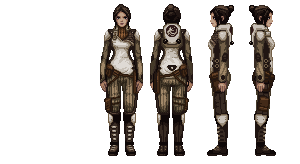A dozen years ago, my dad turned 60 and declared that what he really wanted for his birthday was to see the Aurora Borealis. His birthday being in January, this was not an impossible request, and somehow we concluded that the best way to realize it was to set off for Iceland. There is much that can be said about that trip, but relevant to this post is that it was when first I heard of Snorri Sturluson. Despite the fact that the travelers were all well-intentioned, purportedly mature, multiculturalists, at least 2% of our conversation all week consisted of simply saying the name “Snorri Stuluson” and laughing at its strange sound. (“Ole Worm” — which we also mispronounced — got his as well. Also, the word for “horse” in Iceland is “hross”; how delightful!) Anyway, we never did see the Northern Lights, but little did I know that Snorri would come to wield such a weight influence over me in the years to come.
(As an aside: the Icelandic patronymic naming system is the direct source of the fabrinymics in Primordia.)
To the extent there is a single author whose influence on our next project is greatest, it is Snorri. At a minimum, one must attest to him The Heimskringla, the Prose Edda (from which derives much of what we know of Norse mythology), and books on skaldic poetry, each of which has been of great use to me. But he is potentially also the author of Njal’s Saga, which would give him even more importance. In any case, I don’t mean to catalogue every book I’ve read, or write a paean to Snorri — a man who exceeded me not only in my avocation as a writer but in my day job as a lawyer — but simply to briefly touch on him before sharing some quotes that help give a flavor for where we’re going.
By law alone will our land be built up, and by violence laid to waste.
The Norse Myths (Kevin Crossley-Holland, drawing on Snorri’s mythological work):
Odin did not extend a friendly welcome to the witch Gullveig when she came to visit him. In his hall the High One and many other Aesir listened with loathing as she talked of nothing but her love of gold, her lust for gold. They thought that the worlds would be better off without her and angrily seized and tortured her; they riddled her body with spears.
Beowulf (Heaney trans.):
There was Shield Sheafson, scourge of many tribes,
a wrecker of mead-benches, rampaging among foes.This terror of the hall-troops had come far.A foundling to start with, he would flourish later onas his powers waxed and his worth was proved.In the end each clan on the outlying coastsbeyond the whale-road had to yield to himand begin to pay tribute. That was one good king.
There were two men, one called Gauka-Thórir, the other, Afra-Fasti. They were highwaymen and evil robbers. These two brothers were bigger and stronger than other men, and they did not lack daring and courage.
The king said that it seemed to him that it might be a good thing to have the service of men like these. “I am inclined,” he said, “to accept the service of men like these. But are you Christians?”
Gauka-Thórir answered, saying that he was neither Christian nor heathen. “Nor have we fellows any other belief than trust in our own power and success, and that proves to be enough for us.”
See! warp is stretched
For warriors’ fall,
Lo! weft in loom‘Tis wet with blood;
Now fight foreboding,
‘Neath friends’ swift fingers,
Our gray woof waxes
With war’s alarms,
Our warp bloodred,
Our weft corpseblue.This woof is woven
With entrails of men,
This warp is weighted
With heads of the slain,
Spears blood-besprinkled
For spindles we use,
Our loom ironbound,
And arrows our reels;
With swords for our shuttles
This war-woof we work;
So weave we, weird sisters,
Our warwinning woof.
Needless to say: the project to come is not especially cheerful!









